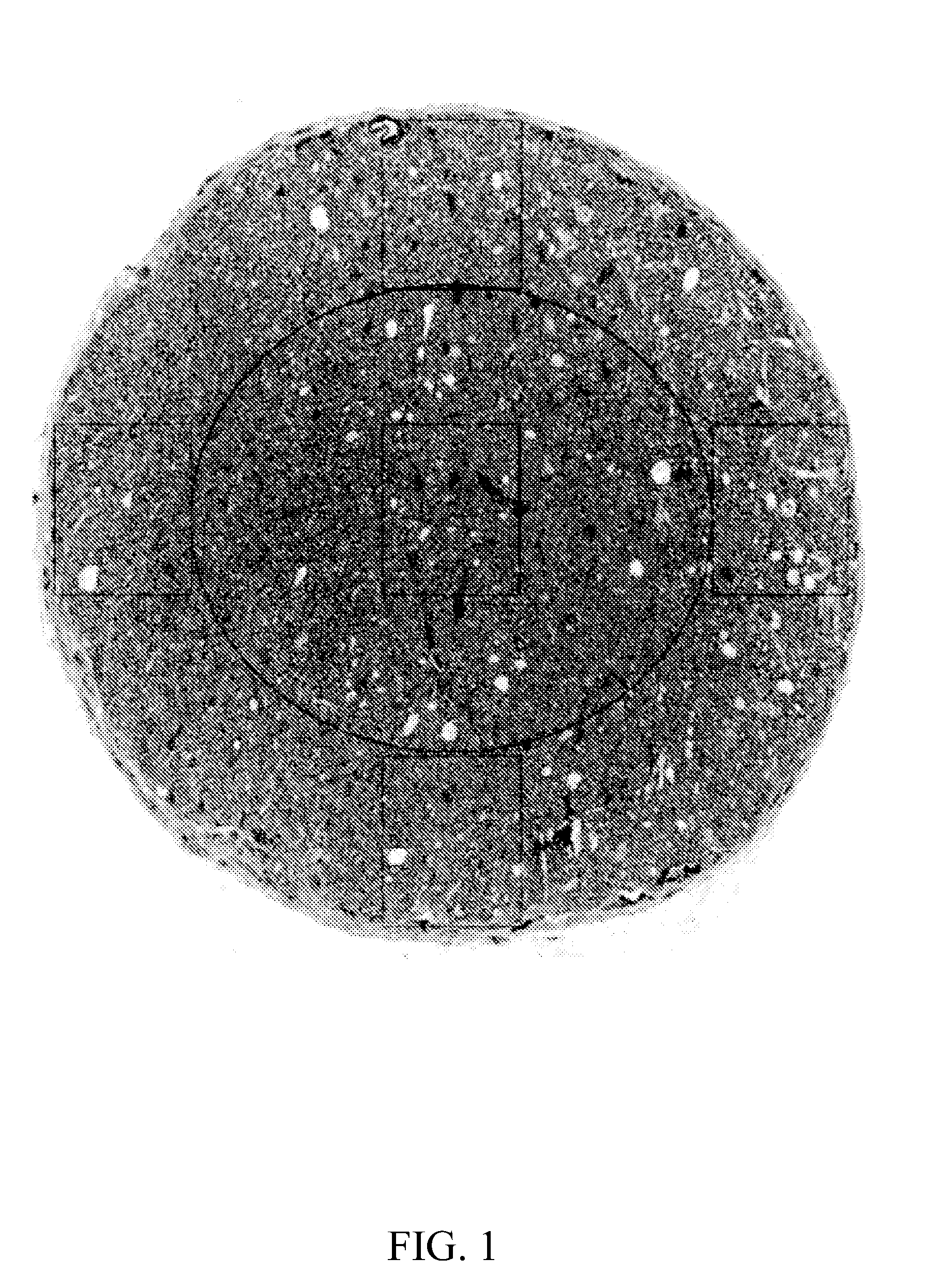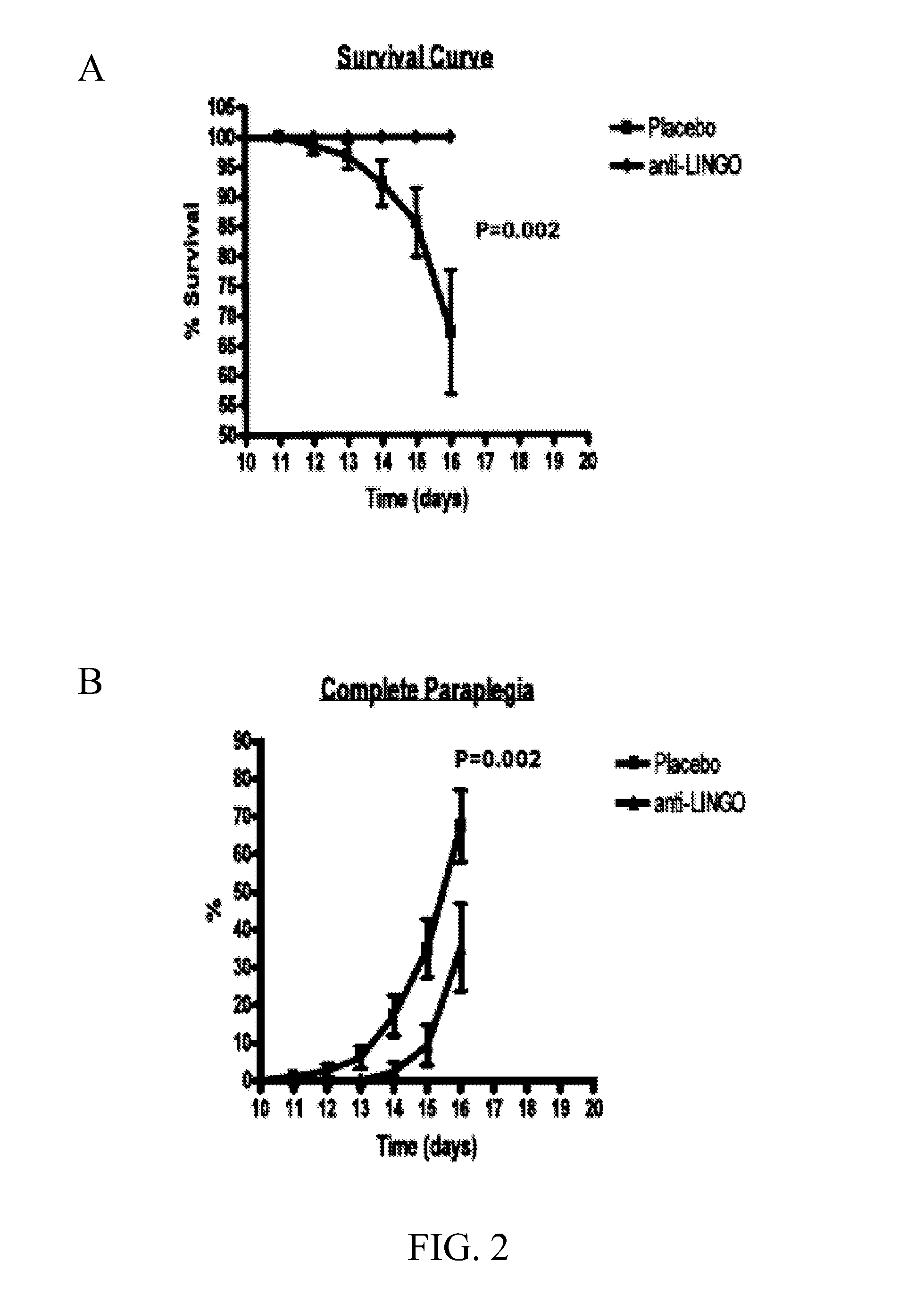Combination therapies and uses for treatment of demyelinating disorders
a combination therapy and demyelinating technology, applied in the field of demyelinating disorders, can solve the problems of reduced myelination capacity, reduced myelination capacity, loss of trophic factors that support neurons and axons, etc., and achieves enhanced neuroaxonal protection, increased axonal extension, and enhanced myelination.
- Summary
- Abstract
- Description
- Claims
- Application Information
AI Technical Summary
Benefits of technology
Problems solved by technology
Method used
Image
Examples
example 1
LINGO-1 Antagonism Reduces Morbidity and Mortality from MOG-EAE in Mice and Promotes Axonal Protection in the Inflamed Optic Nerve
[0436]Acute optic neuritis (AON) is an inflammatory disease of the optic nerve that often occurs in multiple sclerosis. AON is caused by inflammatory injury to the optic nerve and presents with visual loss due to edema, inflammation, and damage to the myelin sheath covering the optic nerve and axons. As a result of AON, there is often a significant loss of the retinal nerve fiber layer and retinal ganglion cell layer. Current treatment of AON is limited to intravenous treatment with high dose corticosteroids which fasten the resolution of edema but do not promote central nervous system (CNS) remyelination or provide neuroaxonal protection from CNS inflammatory demyelination.
[0437]Animal models for the study of optic neuritis include the rat and mouse experimental autoimmune encephalomyelitis (EAE) models; in which EAE induction results in the development ...
example 2
LINGO-1 Antagonism in Combination with Corticosteroid Treatment Provides Increased Axonal Protection Compared to LINGO-1 Antagonism Alone in the Rat EAE Model
[0444]Acute optic neuritis (AON) is an inflammatory disease of the optic nerve that often occurs in multiple sclerosis. AON is caused by inflammatory injury to the optic nerve and presents with visual loss due to edema, inflammation, and damage to the myelin sheath covering the optic nerve and axons. There is significant loss of the retinal nerve fiber layer and retinalganglion cell layer as a result of AON. Current treatment of AON is limited to intravenous treatment with high dose corticosteroids which fasten the resolution of edema, but do not promote central nervous system (CNS) remyelination or provide neuroaxonal protection from CNS inflammatory demyelination.
[0445]Animal models for the study of optic neuritis include the rat and mouse experimental autoimmune encephalomyelitis (EAE) models; in which EAE induction results ...
PUM
| Property | Measurement | Unit |
|---|---|---|
| distance | aaaaa | aaaaa |
| distance | aaaaa | aaaaa |
| distance | aaaaa | aaaaa |
Abstract
Description
Claims
Application Information
 Login to View More
Login to View More - R&D
- Intellectual Property
- Life Sciences
- Materials
- Tech Scout
- Unparalleled Data Quality
- Higher Quality Content
- 60% Fewer Hallucinations
Browse by: Latest US Patents, China's latest patents, Technical Efficacy Thesaurus, Application Domain, Technology Topic, Popular Technical Reports.
© 2025 PatSnap. All rights reserved.Legal|Privacy policy|Modern Slavery Act Transparency Statement|Sitemap|About US| Contact US: help@patsnap.com



